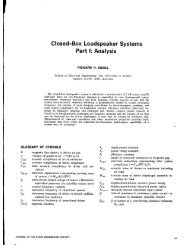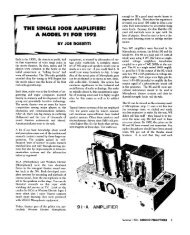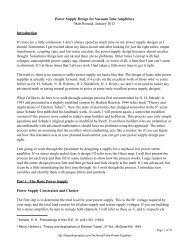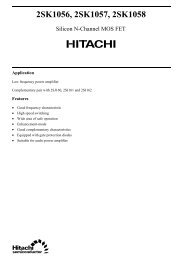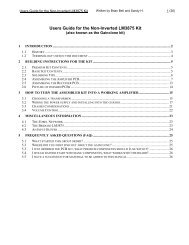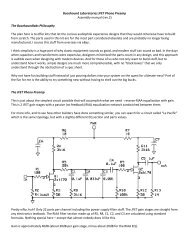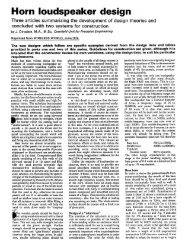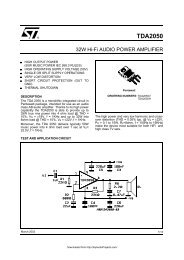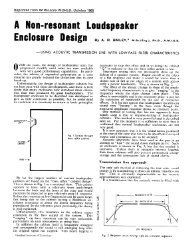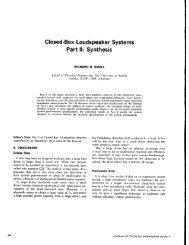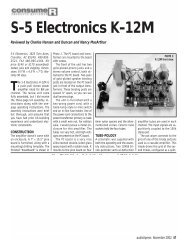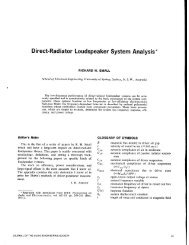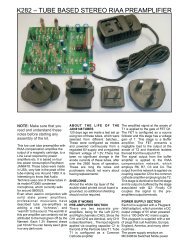A Model of Open-Baffle Loudspeakers - DIY Audio Projects
A Model of Open-Baffle Loudspeakers - DIY Audio Projects
A Model of Open-Baffle Loudspeakers - DIY Audio Projects
Create successful ePaper yourself
Turn your PDF publications into a flip-book with our unique Google optimized e-Paper software.
problematic in the actual implementation <strong>of</strong> the algorithm, since the non-causal part <strong>of</strong> the energy is<br />
small, and since there will be some initial delay from the propagation from the source to the edge<br />
point, even windowing away the part causing non-causality in the final result will not have a strong<br />
effect on the energy.<br />
After the delays and amplitudes corresponding to each edge point have been determined, then the<br />
impulse responses on each edge point are delayed and attenuated by the appropriate amount and<br />
added. If fractional delays are used, then this involves explicitly convolving the delay and the<br />
impulse response. The use <strong>of</strong> fractional delays will increase the computation per edge point, but the<br />
number <strong>of</strong> points will be reduced, which reduces the computational load at earlier stages and<br />
reduces the amount <strong>of</strong> memory needed.<br />
The polar pattern can be obtained by computing the frequency response to several angles and<br />
tracking the behaviour <strong>of</strong> a single frequency. An alternative way, which is faster if only a few<br />
frequencies are computed, is to go back to the definition <strong>of</strong> the Fourier transform and compute the<br />
inner product <strong>of</strong> the impulse response to the desired angles with sinusoidals corresponding to the<br />
desired frequencies. This yields the spectrum component at that particular frequency. As the<br />
magnitude <strong>of</strong> the transfer function is needed, then for each frequency the multiplication should be<br />
done with both a sine and a cosine signal, yielding the imaginary and the real parts.<br />
2.5 Practical drivers<br />
When the frequency range <strong>of</strong> interest goes well above the fundamental resonance <strong>of</strong> the driver, the<br />
structural asymmetry <strong>of</strong> a typical transducer must be taken into account. In typical loudspeakers a<br />
simple approximation for the structure is to model the volume between the diaphragm and the<br />
chassis and the chassis holes as a Hehnholtz resonator. The practical problem <strong>of</strong> this kind <strong>of</strong> model<br />
is that the effective port length becomes difficult to determine computationally, since the distance<br />
between the holes and the diaphragm is roughly similar to the dimensions <strong>of</strong> the holes, and the<br />
baffle hole etc. will influence the effective length. The Hehnholtz resonator model, however, gives<br />
a reasonable qualitative approximation for the asymmetry in the frequency response, although the<br />
asymmetry <strong>of</strong> the radiation pattern (both near-field and far-field) is still ignored.<br />
Port formed by chassis<br />
holes and baffle<br />
Volume<br />
between<br />
diaphragm and<br />
chassis<br />
Figure 6. Geometrical parameters describing the Helmholtz resonator approximation for the rear <strong>of</strong><br />
the driver.



